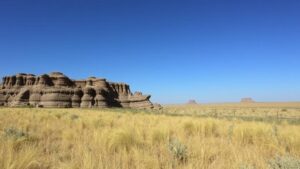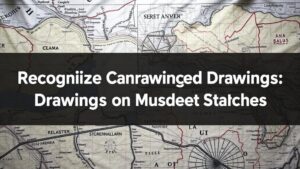Spotting Burial Markers in Cartographic Clues From Old Legends
Spotting Burial Markers in Cartographic Clues From Old Legends
The exploration of cartography–the art and science of map-making–offers unique insights into historical events, including burial sites often hidden within legends. This article discusses how cartographic clues can lead to the identification of burial markers associated with ancient legends, highlighting methods, examples, and the significance of these findings in understanding past cultures.
The Intersection of Cartography and Legends
Legends, often steeped in cultural significance, can provide valuable information regarding burial sites. Historically, maps have contained various symbols and markings that, when tied to local folklore, may point to the locations of graves. This intersection of cartography and folklore suggests that ancient peoples encoded significant information into their maps, which can still be deciphered today.
Reading the Signs: Symbols and Markers
Maps from different periods often employ distinct symbols that may suggest burial sites. For example, markers such as crosses, circles, or unique icons can indicate cemeteries or memorial areas. In some Native American legends, cartographic clues often link with significant topographical features, like rivers or mountains, which may signify either the location or the importance of a burial site.
Case Studies: Investigating Notable Examples
Several well-documented cases illustrate the efficacy of using cartographic clues in the search for burial markers:
- The Legend of the Lost Coffin: This tale from Oak Island, Nova Scotia, suggests buried treasure linked to the Freemasons. Maps created in the early 18th century show cryptic symbols that have been speculated to signify burial locations. Geologic investigations have yielded significant findings, reinforcing the theory that those cryptic markings may indeed point to burial markers.
- Bones on the Map: During the Gold Rush, maps from early settlers in California sometimes indicated burial sites of lost prospectors. By analyzing these historical maps alongside local graveyard records, researchers have been able to identify the resting places of several miners presumed lost to history, proving that legend can illuminate forgotten realities.
The Role of Technology: GIS and Modern Mapping
In recent years, Geographic Information Systems (GIS) have become invaluable in the analysis of old maps. By integrating various data layers and employing modern techniques such as ground-penetrating radar (GPR), researchers can identify potential burial sites indicated by cartographic clues. For example, the use of GIS in archaeological studies of ancient Egyptian burial grounds has been pivotal. Researchers have successfully located unknown tombs by correlating historical maps with satellite imagery and ground data.
Cultural Significance: More than Just Locations
Understanding the legends surrounding burial sites adds profound cultural significance to the geographic data. Sites linked to legendary figures, like King Arthurs burial in Avalon, often draw interest not only for potential archaeology but for their storytelling traditions, which provide context and meaning to their locations. Examining these sites through both a cartographic and mythological lens enriches our understanding of historical populations and their values.
Conclusion: The Future of Cartography in Historical Investigation
Spotting burial markers through cartographic clues offers a promising avenue for historians, archaeologists, and folklore enthusiasts alike. As technology advances and interdisciplinary approaches become commonplace, the ability to blend geography, history, and legend allows for deeper explorations into the past. pursuit of these markers not only sheds light on historical events but also nurtures a greater appreciation of the cultural narratives woven through time.
Actionable Takeaways
- Use historical maps and folklore when investigating potential burial sites in specific regions.
- Employ modern technology such as GIS and ground-penetrating radar to enhance research capabilities.
- Engage with local historians and cultural experts to deepen understanding of the narratives linked to geographical data.



